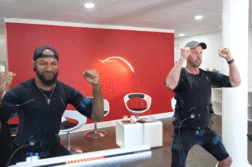ORLANDO, FL (Ivanhoe Newswire) — They’re annoying, and they seem to be everywhere. I’m talking about pop-up ads. You know … the small windows or banners that appear in the foreground while you’re browsing a website. They are essentially ads that are intended to grab your attention, but they can be distracting and sometimes dangerous. Ivanhoe tells us what you need to know about pop-ups.
Are pop-up ads popping up on your screens?
Lincoln Chiappone, Network Engineer/IT Tech at PCGeeks2Go says, “They’re either trying to market you in a positive way and just basically marketing to make a business for themselves, or they’re malicious.”
Either way pop-ups can be annoying. And, if you click on them, it’s possible that hackers can snag sensitive personal and financial information, such as usernames, passwords, and credit card numbers. So, never click “agree,” “ok” “no” or “yes” in a pop-up. If you want to close a pop-up, it’s best to hit the x or shut down your browser altogether. Also, you can add a pop-up blocker to your browser. For google and most browsers, the blocking features are found under settings. You should also reject any notification invites.
Chiappone says, “Web browsers will ask you if you want to allow notifications, and it’s imperative that you say no. If you say yes, you’re going to allow them to give you notifications even when you’re not on that website.”
Here are some red flags for how to spot malicious pop-ups: The ad asks you for payment to get rid of a virus, it tells you to call a number, it tries to scare you into entering information, or it contains typos and errors. The best advice: always be skeptical.
Chiappone says, “If a pop-up looks like it is real to you, you don’t necessarily have to click on it. You can always go directly to that website instead. And that’s going to be the safest ways for you to investigate.”
Helping you clean your screen.
The average pop-up conversion rate is about 12 percent. That means that 12 percent of people who see a pop-up end up clicking on it and taking action.
Sources:
https://www.getresponse.com/blog/what-are-popups
https://allaboutcookies.org/what-are-pop-up-ads
https://www.optimonk.com/popup-statistics/
Contributors to this news report include: Julie Marks, Producer; Roque Correa, Editor.
To receive a free weekly email on Smart Living from Ivanhoe, sign up at: http://www.ivanhoe.com/ftk



